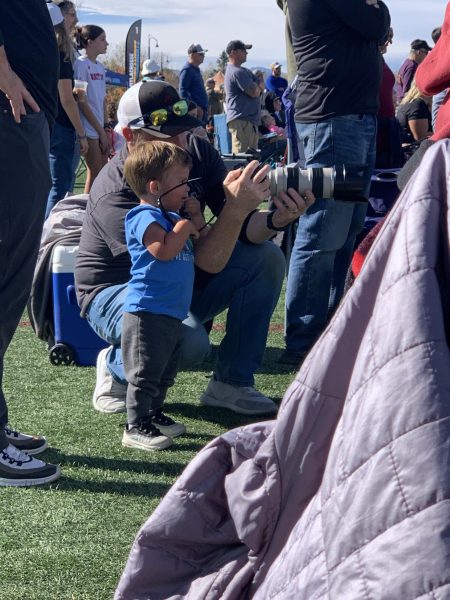Fighting Climate Anxiety
It started when Sierra Barnes got home from a camping trip. “I was reading online, just a lot of stuff about dairy farming, about, like, the meat processing industry . . . they’re hung upside down and they’re skinned and they’re still conscious and their hooves are ripped off, and they can still think, and they can still feel” and then the fear set in. “You can’t move, and it’s like, you can’t feel, and you’re stuck in your own head,” she said.
Sierra, like many, suffers from climate anxiety. Climate anxiety, also known as solastalgia, is quickly becoming a large problem across the world. Right now, solastalgia is still not as big an issue as it could be. Sierra said that because many people don’t necessarily have an outlet, or a way to cope, “It’s kinda like a losing battle.”
For her, she finds away to relax by spending time with her animals, and she says that getting involved is one of the biggest ways to help. “When you get involved with a movement, you feel a sense of unity, and someone else cares about the same things you do” she said that that’s one of the biggest ways that’s helped her, “I feel like I’m doing something, I get less anxiety,” she said.
When asked about therapy, Sierra said that “for some people it can be a big help,” and she’s not wrong. The American Psychological Association created a 69-page climate change guide to train mental healthcare providers. Charles Miller, an employee at Summitstone Health Partners said that now trainings are occurring on how to treat those suffering from solastalgia.
Sierra said that the episodes don’t really “last that long, but it’s kinda scary when they happen.” She said that out of a rate of 1-10, they can get really close to the top. “It’s very much like a panic attack.”
But there are ways to help; Sierra finds talking with someone experiencing the same thing is incredibly helpful. “If you have someone who you trust, and you have someone who you know is going through the same thing, that’s really helpful.” She said that being able to just make eye contact with someone who she knows has the same viewpoint also helps her calm down.
For Sierra, there’s a lot of things that can trigger climate anxiety. She said that pictures, and videos, statistics, and real-time interactions with people are some of the biggest ones out there. And she said it’s hard, sometimes, to calm down. “I don’t really have that many coping strategies,” she said, “I probably should though.”
But awareness about solastalgia is becoming pronounced in society, and with this many people struggling with climate anxiety, especially on such extreme rates, the need for therapists specializing in this is a growing concern. But Sierra is hopeful, and as long as climate change, and climate anxiety becomes more well recognized, especially as an issue, then it will be easier to cope, and find methods to do so.

Mady is a sophomore at Rocky Mountain High School. She loves art (photography in particular), music, the ocean (marine biology), and journalism, and is...






